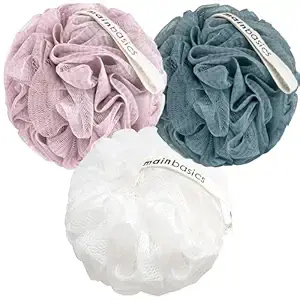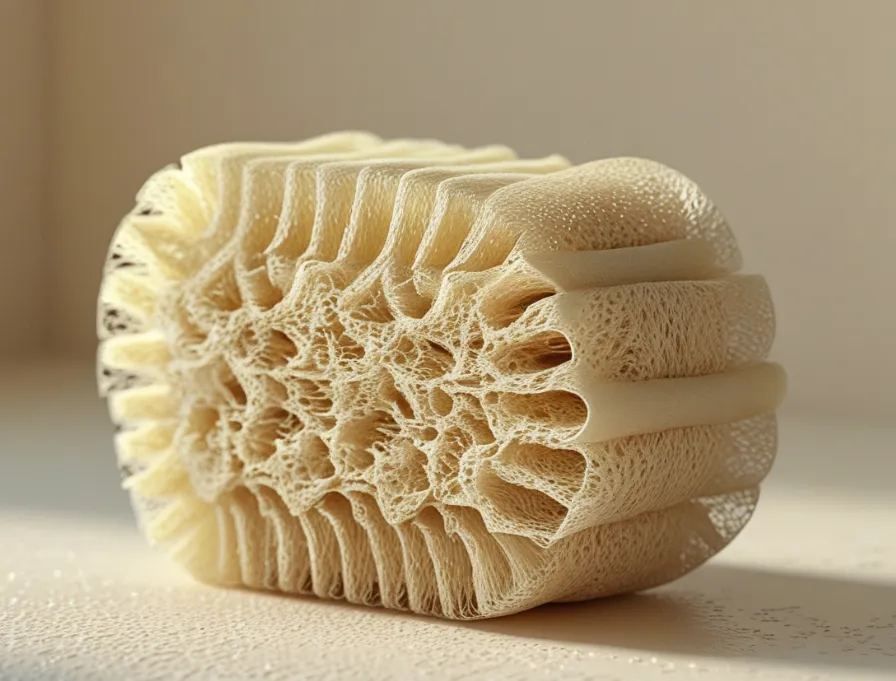Loofah Sponge: Natural Skin Exfoliator
Loofah Sponge: Natural Skin Exfoliator. In recent years, growing environmental awareness has driven many people to seek ecological alternatives to everyday products. One of the most interesting discoveries in this field is loofah, an eco-friendly and versatile vegetable sponge that is gaining increasing popularity. In this article, we will explore what loofah is, how it is cultivated and harvested, its ecological characteristics, its multiple uses, health benefits, and where to buy it.

What is a loofah sponge?
The loofah is a plant belonging to the Cucurbitaceae family, the same as zucchinis and cucumbers. Originating from tropical and subtropical regions, the loofah is mainly cultivated in Asia and Africa.
The fruit of the loofah, when mature, is dried to obtain the vegetable sponge that we all know. The inner fibers of the fruit transform into a fibrous network that, once dried, becomes a natural sponge ideal for multiple uses.
Natural mosquito repellent. Mosquitoes are attracted to people thanks to things like strong smells (such as scented soaps, food, or skin odor), dark or bold-colored clothing, and warm body temperature.
MainBasics Bath Shower Loofah Sponge Pouf Body Scrubber Exfoliator Body Wash Sponge (Set of 3, Airy Blossom)
MORE LATHER, LESS BODY WASH – A relaxing bath requires the perfect amount of rich lather. Our shower puff pairs perfectly with soaps and body washes, producing a luxurious lather effortlessly.

Uses of the Loofah Sponge
The loofah is extremely versatile and can be used in many ways in everyday life. Here are some of its main uses:
- Body cleaning sponge: The loofah is particularly appreciated as a shower sponge. Its soft and flexible fibers gently exfoliate the skin, removing dead cells and leaving the skin soft and radiant. An excellent example is the Loofah Cylinder by Martini SPA, a sponge made from 100% Egyptian loofah that provides softness, silkiness, and radiance to the skin.
- Dishwashing: The loofah can be used in the kitchen to wash dishes, pots, and pans. Its natural fibers are effective at removing food residues without scratching delicate surfaces.
- General cleaning: Besides the kitchen, the loofah is useful for cleaning other surfaces in the house, such as sinks, countertops, and even for cleaning plants, helping to remove dust and dirt from the leaves.
When to harvest your luffa
Loofah Sponge: Natural Skin Exfoliator. You know your loofah is ready to harvest once it starts to turn yellow and dry out, eventually turning brown. The longer you can leave it on the vine to dry out, the better.
Mine started to get some rotting in patches due to the heavy rain experienced during another La Nina weather pattern. So the one in the picture above was taken off and allowed to dry out in the sun. Keep your luffa out of the rain while it dries out and soon you’ll be ready to prepare your luffa and transform it into a sponge.
How to prepare a luffa sponge
It’s pretty easy to prepare your luffa. Just follow the steps here.
Steps to prepare your luffa sponge:
- Harvest your luffa either fully dry or still green
- Dry the luffa in the sun if it’s stil green and wait for the skin to turn brown. (I waited a week).
- Pick the bell off the end and shake out the seeds.
- Crush the luffa to break up the skin and then peel the skin off.
- Cut the luffa into sections and remove any remaining seeds inside.
- Give the luffa a good wash in soapy water as it may still be a bit slimey if not fully ripe when harvested.
- Rinse under cold water.
- Squeeze out any water and allow to dry out completely.
Your luffa is then ready to use. It’s a great environmentally friendly alternative to scourers for pots and pans and a good exfoliator in the shower. Just allow it to dry fully after using. When it’s getting old simply put it in the compost, then replace it with a new one.
How loofah sponges are made
Luffa gourds are grown in tropical and subtropical climates. Before World War II, at the height of loofah popularity in the United States, many were grown and imported from Japan. These days, plants can be grown domestically or imported from nearly any warmer climate.
After the plant blooms, the flower develops into a long, gourdlike plant that resembles a giant cucumber or zucchini. The gourds are then harvested and can be left to dry out for up to six months.
Dried gourds are soaked in water, peeled, and their seeds are removed. Once they’re completely dry, they can be sliced, cut, or shaped in a variety of ways before they’re sold as sponges.
Loofah sponge uses and benefits
Loofah sponges from the luffaplant have historically been used as scrubbers. Benefits and uses of a loofah include:
- using with soap to lather up and cleanse your skin
- exfoliating the skin on your body and face
- stimulating blood circulation while you shower or bathe
Some people also swear by loofahs as household cleaning products. They can be used to scrub tiles, showers, sinks, and other hard-to-clean surfaces.
Risks of using a loofah
People love loofahs because they exfoliate your skin. Dead skin cells sometimes clump around the top layer of your skin, making for a duller and less youthful appearance. Loofahs scrub this layer off gently and without disrupting the young and healthy skin cells underneath.
This benefit can lead to some hidden risks. Once you hang your loofah up to dry in the shower area, it’s still technically collecting moisture or steam residue from your time spent using it. Dead skin cells lingering in a moist place is a recipe for dangerous bacteria to grow and multiply.
Loofahs haven’t been shown to grow most staph or strep bacteria, but they can become harbors for other bacteria on your body, including E. coli.
If you’re going to clean your loofah regularly and correctly, this won’t be an issue for you — though most people don’t.
Loofahs can also be too abrasive for some skin types. If you’ve ever noticed redness or irritation after using a loofah, your skin might be particularly sensitive to dermabrasion and exfoliation.
The coarse, somewhat brittle feeling of the loofah fibers may be too much and can damage skin over time.
How to clean a loofah
After you use your loofah, you should pay attention to how you’re maintaining it each day.
Instead of simply hanging it in your shower or on a bath hook, use a dry towel to thoroughly wring out moisture and get it dry. Put it in a cool, dry place outside of your bathroom when you’re finished.
You should also clean your loofah every week. concluded that regularly cleaning your loofah with a diluted water mixture of 10 percent bleach may reduce your risk of bacterial contamination.
Dip it in the mixture for 5 minutes. After cleaning, rinse it thoroughly with cool water and dry it out completely before putting it somewhere cooler to hang.
To use loofahs safely, you need to replace them often. Cleveland Clinic recommends throwing out your loofah every 3 to 4 weeks. Any sign of mold or a lingering musty odor are also signs to get rid of your loofah right away.
If you want to avoid spreading bacteria with your loofah, completely avoid using it in your genital area. Remember that the perineum is a place where E. coli and other dangerous bacteria sometimes grow, so don’t use a loofah on that part of your body, either.
You should also avoid using it when you’re freshly shaved. Your skin is compromised for several days after shaving and bacteria can get past your skin barrier.
Where to buy loofah products
Natural loofahs are coming back into vogue, and it isn’t hard to find them. Loofah products are sometimes called “Natural Egyptian style” or “loofah sponge” to differentiate them from their imitation synthetic counterparts.
You can buy a real loofah in health food stores, as well as chains such as Whole Foods.
Check out these products available online.
Alternatives to loofahs
Loofahs aren’t the only way to cleanse your body in the shower. If you’d like to avoid the risk of bacterial contamination entirely, you can phase out loofahs for other scrubby alternatives.
Synthetic bath poufs are typically made of nylon, and have dense layers of mesh in a circular pattern. Bath poufs can still grow bacteria in them, just like natural loofahs. In fact, they may be even worse.
Silicone bath scrubbers may have antimicrobial benefits but should still be cleaned regularly.
Sea sponge is an alternative to loofahs. Like loofahs, they don’t have any dyes, preservatives, or chemicals inside. Sea sponge has some naturally occurring enzymes that kill bacteria. Sea sponge will still need to be cleaned regularly, dried after your shower, and replaced frequently.
Washcloths are an efficient standby if you want to ditch loofahs, poufs, and sponges altogether. They have a gentle exfoliating effect and can spread soap later easily.
Best of all, a washcloth can just be thrown right into a washing machine after use and rinsed with detergent and hot water regularly. Washcloths can be used safely for years, unlike many other bath accessories.




